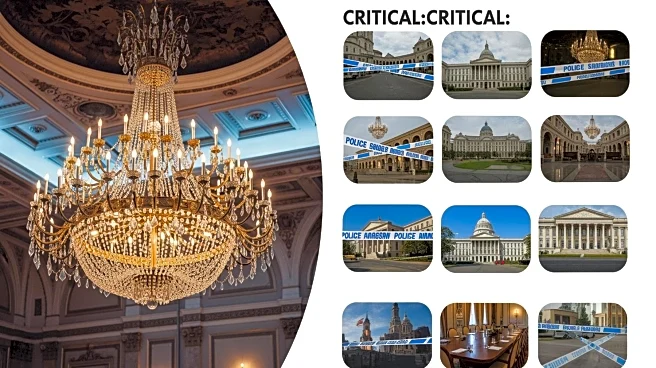What's Happening?
President Trump is undertaking a significant renovation of the White House, specifically demolishing part of the East Wing to construct a new ballroom. This project, described as a blend of Caesars Palace and the Palace of Versailles, is set to cost $200
million, funded by private interests with business before the federal government. The ballroom will span 90,000 square feet, making it larger than a football field but smaller than a Costco. This addition is a permanent change to the historic residence, which has undergone various renovations since its initial construction in 1792. The project has sparked discussions about its necessity and the implications for the role of the First Lady, as the East Wing traditionally houses the First Lady's offices.
Why It's Important?
The renovation of the White House is significant as it represents a major alteration to a historic national symbol. The funding method, involving private interests, raises questions about influence and transparency in government projects. Additionally, the construction impacts the traditional role of the First Lady, potentially diminishing the stature and space allocated for presidential spouses. This development may also reflect broader trends in government architecture, as President Trump has advocated for classical styles in federal buildings. The project underscores ongoing debates about the balance between preserving historical integrity and modernizing government facilities.
What's Next?
The construction of the new ballroom is expected to continue despite the current government shutdown, as it is privately funded. The project may lead to further discussions about the role and space for First Ladies in the White House. Additionally, the architectural style chosen for the renovation could influence future government building projects, aligning with President Trump's executive order promoting classical architecture. Stakeholders, including historians and architectural experts, may continue to debate the implications of such a significant change to the White House facade.
Beyond the Headlines
The renovation raises ethical questions about the influence of private funding in government projects, especially when donors have business interests before the federal government. The choice to prioritize a large event space over traditional office areas for the First Lady may reflect shifting priorities in presidential administration roles. Furthermore, the emphasis on classical architecture could signal a cultural shift in how government buildings are perceived and constructed, potentially impacting future federal projects.















